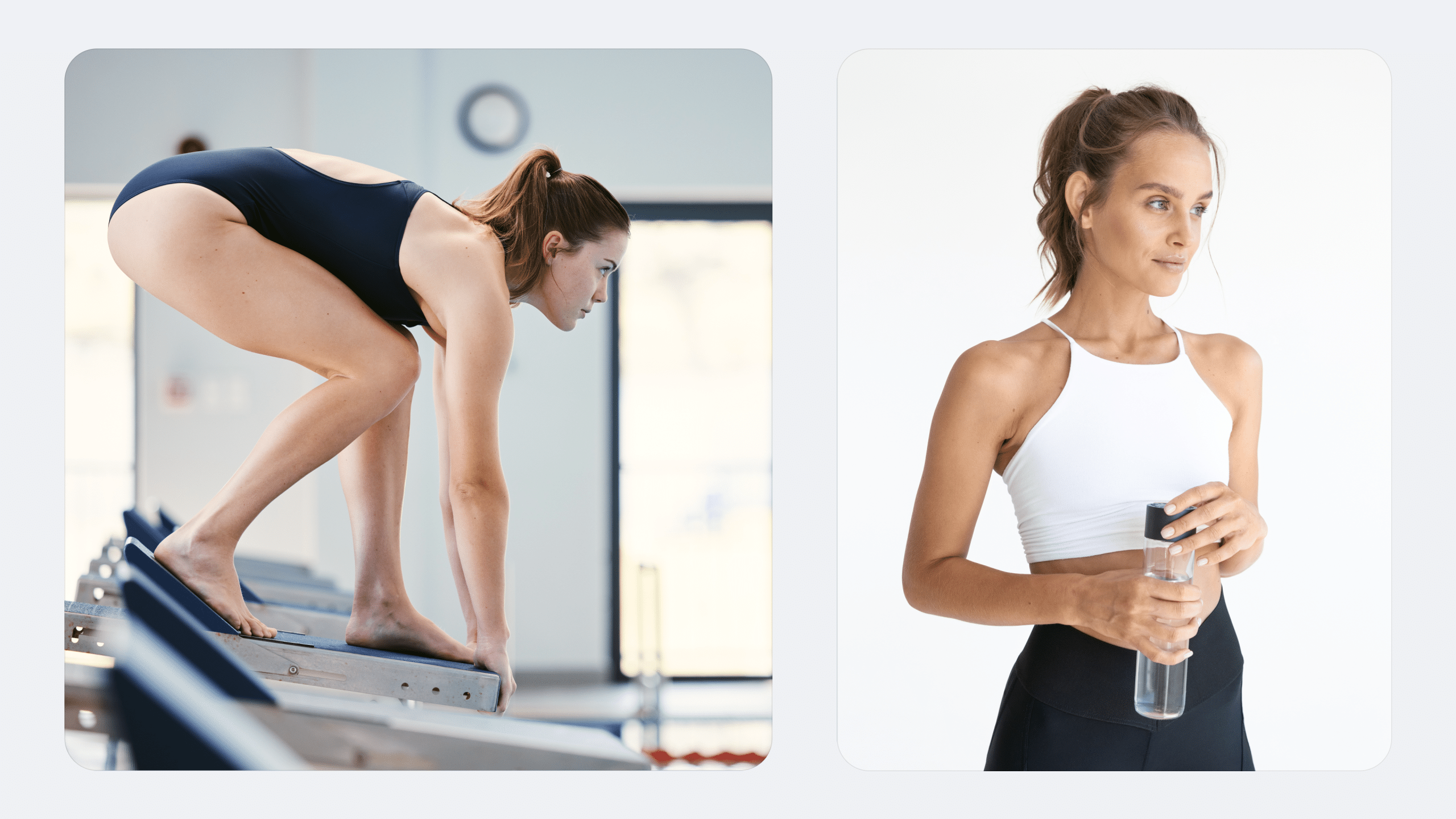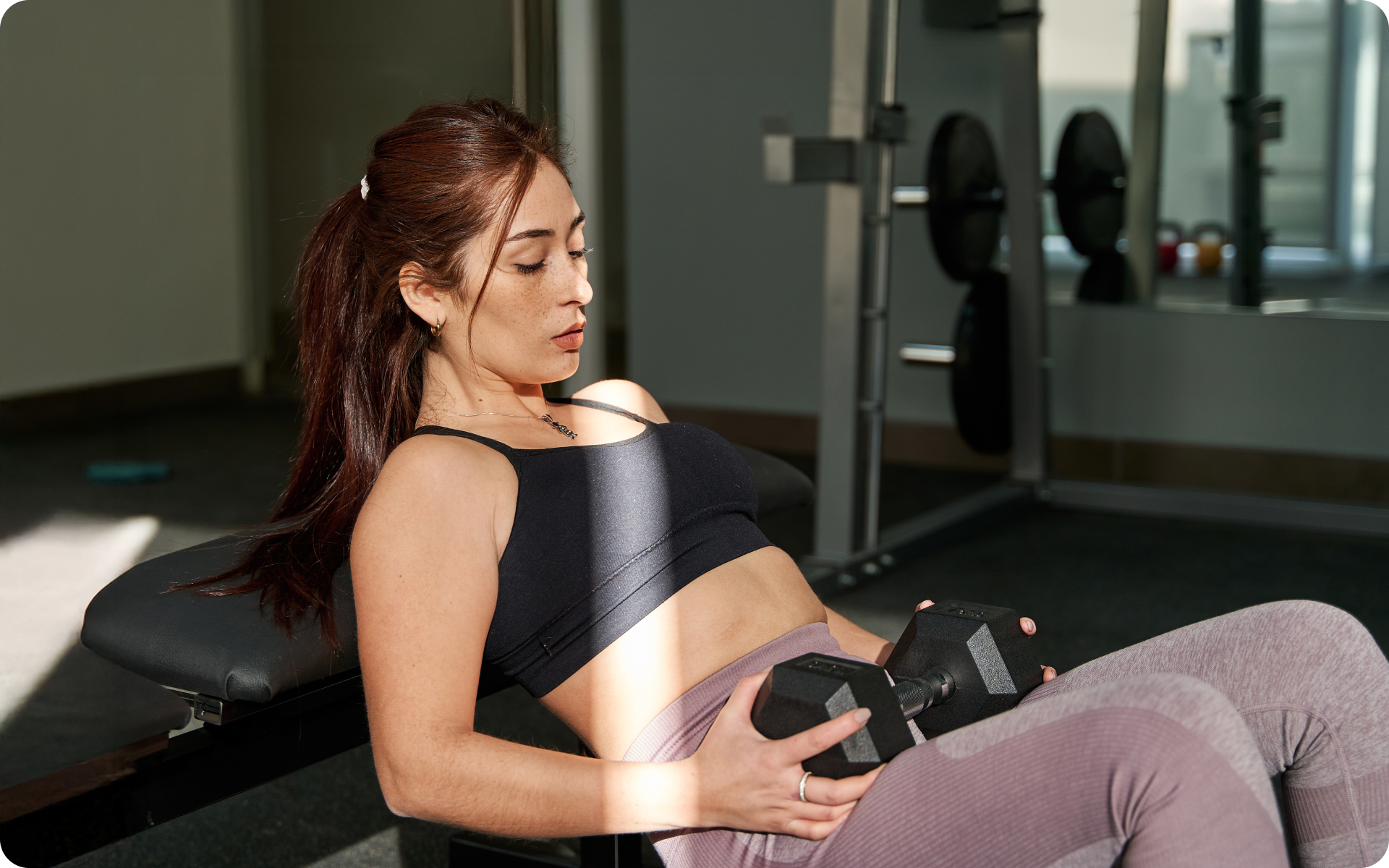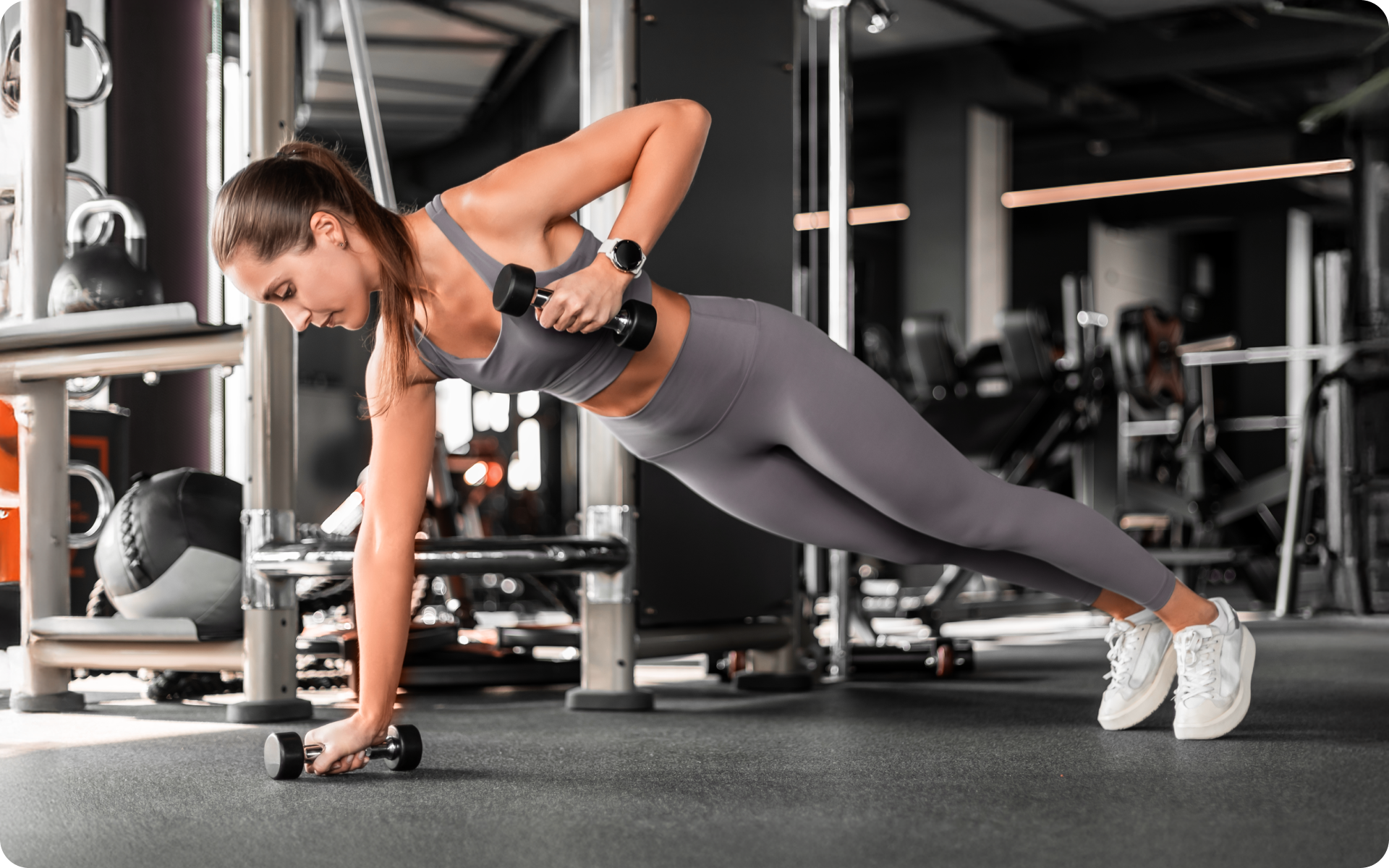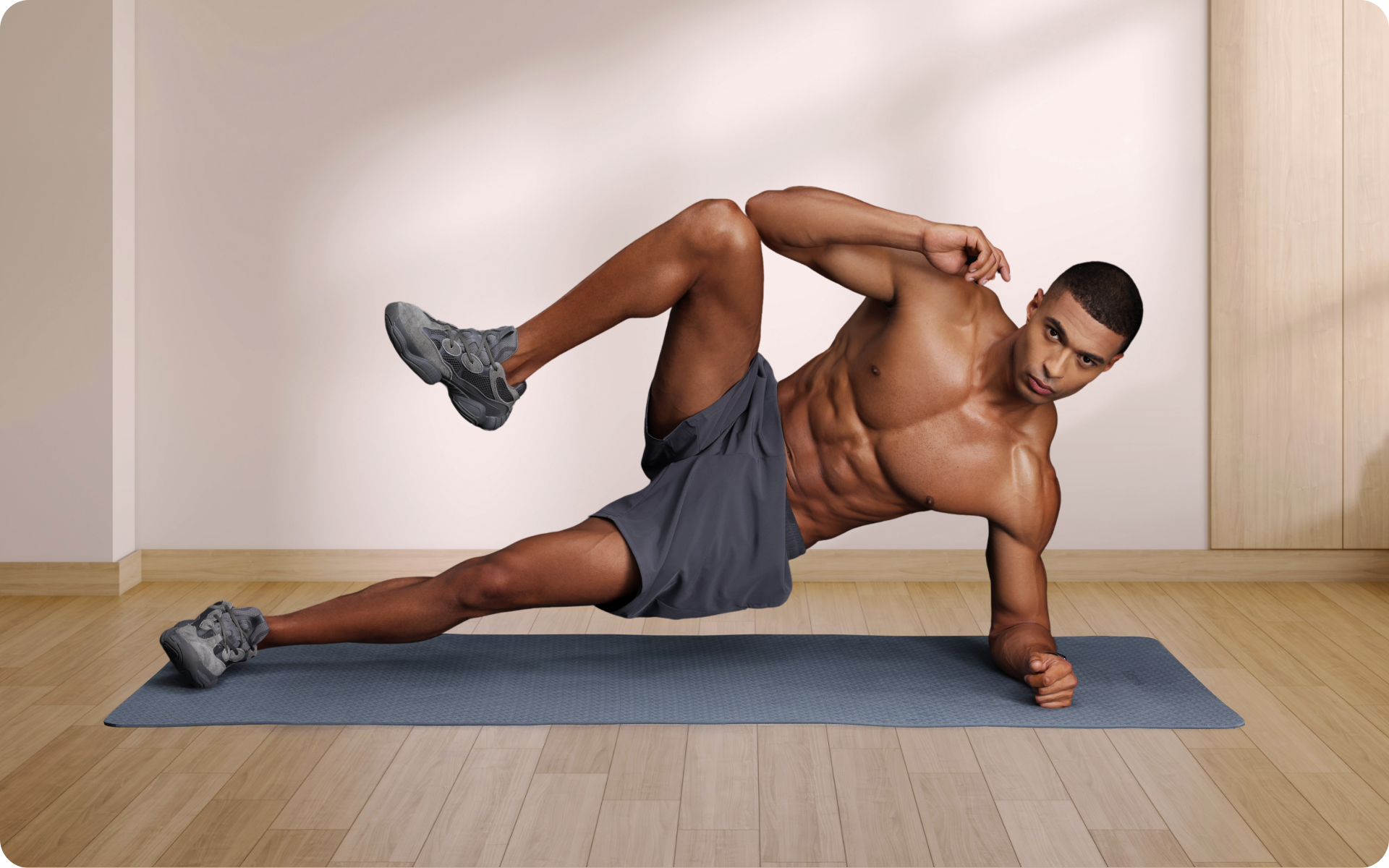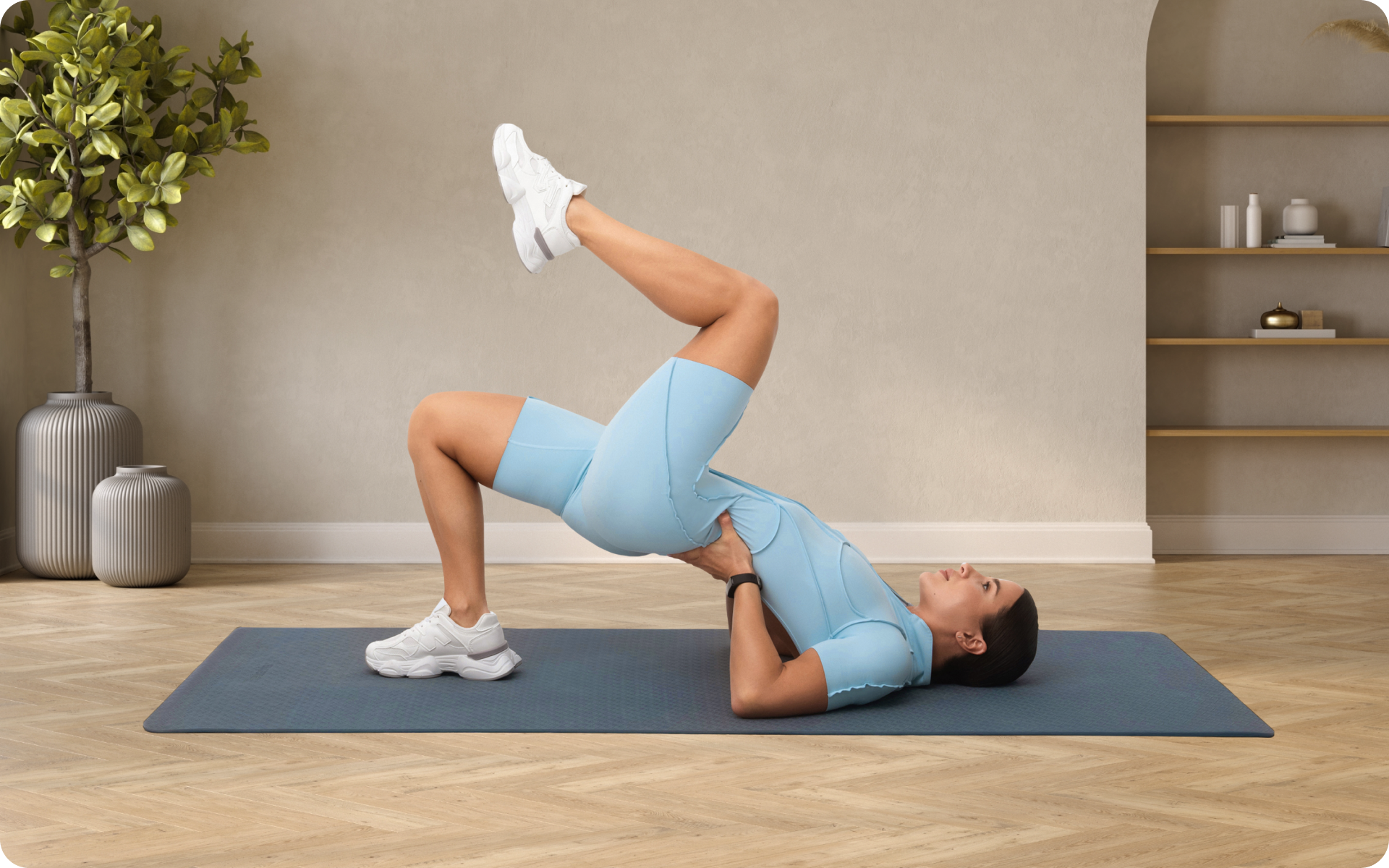Everyone loves swimming. It’s a low-impact exercise that’s suitable for people of all ages and sizes. Swimming is also great for individuals with arthritis or multiple sclerosis. It’s a simple way to work out, improve your cardiorespiratory endurance, destress, unwind, and have fun.
For many, swimming is a recreational activity. However, it can also be done at a competitive level. In such a case, you’ll need to adopt a workout plan and maybe even train with a coach.
So, how do you select swimming exercises that will help you achieve your intended goal? How long should you work out each day? We’ve listed several swim workouts for beginners and intermediate-level swimmers and give a few tips to help you get the most out of your workout routine.
What Is a Good Swim Workout?
Swimming is a non-contact, light-cardio exercise that can be done by almost anyone from teens to the elderly. It has a wide variety of benefits to your heart and lungs, including increasing your heartbeat and breathing rate.
As it doesn’t come naturally to most, you’ll likely need lessons at first to learn the basics – floating, breathing, kicking, stroking, and coordination of your body movements.
According to the Centers for Disease Control and Prevention (CDC), swimming for 2 and a half hours every week reduces the risk of chronic illness (7). Other benefits of swimming include:
- Works muscles in your whole body – Swimming works both the major and minor muscle groups. This helps tone your muscles while improving your strength and endurance.
- Weight loss – Swimming burns calories, which helps with weight loss. A 160-pound individual burns approximately 423 calories per hour while swimming at a moderate pace (6).
- Appropriate for individuals with MS, arthritis, and other conditions – Swimming is a safe exercise option for people with many injuries, arthritis, multiple sclerosis, disabilities, or asthma. However, every individual has specific medical considerations, so you should discuss it with your doctor before jumping into a swimming program.
- Is inclusive – Swimming is a great activity for almost anyone. Kids, teens, middle-aged adults, and older adults can all engage in this exercise. Swimming is also safe for most pregnant women and is a great way to remain active at this time.
- Boosts mood – Swimming is a fun recreational activity. It brings people together and helps them destress. When you exercise, hormones known as endorphins (often referred to as natural painkillers) are released, which improves your mood (5).
Firstly, it’s imperative to understand that there are many different swim workouts to choose from. The type of workout you go for depends on your goals and your fitness level.
After you’ve determined your goals and current vs desired fitness level, you can go ahead and choose the plan that’s right for you:
Length of the Workout
If your goal is to get used to the water or improve your technique, start with a time goal such as 20 minutes. You can track your distance over the time you swim to keep a record, but your primary focus when you start shouldn’t be distance.
If your goal is to be able to swim for longer distances, start with a manageable distance, then increase your mileage as you advance.
Intensity
Novice and advanced-level swimmers have different levels of endurance and swim at different speeds. New swimmers usually swim at a fairly steady pace throughout a workout. As they advance, they become able to vary speeds and train at both low and high intensities.
Time Available for Training
How much time you have to spare to train also determines what kind of swimming workout to go for. You may be juggling swimming with work or school. And if you’re training for a competitive swim, it’s important that you find a balance. So, pick a swim workout routine that enables you to comfortably do your other activities without straining yourself.
Betterme will keep you laser-focused on your weight loss journey! Nutrient-packed meal plans, fat-blasting workouts, galvanizing challenges and much more. Try using the app and see for yourself!
Best Swim Workouts for Beginners
If you’re a novice swimmer, you should focus on getting used to the water and perfecting your swimming technique. You also need to learn how to breathe properly in water before you can move on to sprinting and swimming for longer distances.
It’s important to start gradually. If you can’t get through your planned workout initially, get some rest and keep trying. Consistency and effort are key, but being patient with yourself is equally important as you need to stay motivated. Most importantly, listen to your body and swim distances your body can handle without pain or burnout.
Below are swim workouts for beginners with a goal of weight loss, each of which is designed to help you achieve different challenges:
Workout 1: Basic Workout
Distance: 1,400 yards
Warm-up
- 100 yards freestyle
Main Set
- 8 x 25 yards flutter kick with board with a 15-second rest period
- 4 x 50 yards alternate laps of freestyle (odds) and backstroke (evens) with 20 seconds rest
- 8 x 25 yards alternate sprint kicks (odds) and easy kicks (evens) with 10 seconds rest in between laps
- 60 seconds rest
- 8 x 25 yards freestyle with 15 seconds rest between laps
- 4 x 50 yards freestyle with 20 seconds rest between laps
- 8 x 25 yards alternating sprint freestyle (odds) and easy backstroke (evens) with 10 seconds rest between laps
Warm Down
- 100 yards easy swim
Workout 2: 30-Minute Distance Workout
Distance: 1,400 yards
Warm-up
- 4 x 25 yards at an easy pace
Main Set
- 4 x 25 yards freestyle with 15 seconds rest between laps
- 8 x 50 yards fast kick with 20 seconds rest between laps
- 4 x 25 yards freestyle with 15 seconds rest between laps
- 1 min rest
- 4 x 25 yards freestyle with 15 seconds rest between laps
- 6 x 100 yards alternating easy freestyle (odds) and hard freestyle (evens) with 30 seconds rest
- 4 x 25 yards freestyle with 15 seconds rest
Warm Down
- 100 yards recovery swim
Read more: Swimming Calories Burned: The Ultimate Guide to a High-Energy Workout
Workout 3: Beginner HIIT
Distance: 1,500 yards
Warm-up
- 4 x 25 yards at an easy pace with your stroke of choice with a 20-second rest period between each interval
Main Set
- 5 x 100-yard freestyles at your average pace with a 30 seconds rest between each interval
- 200-yard freestyle at a moderate pace with a pull buoy and/or paddles
- 8 x 25 yards with a kickboard with 15-second rest period between intervals
- 200 yards at a fast pace with your stroke of choice
Warm Down
- 200 yards easy swim with stroke of your choice
Workout 4: Breathing
Distance: 2,100 yards
Warm-up
- 400 yards easy swim, mix up drills
Main Set
Take 1–2 minutes between each set
- 300 easy kicking w/ fins (on your back or front, with or without a kickboard)
- 4 × 100 easy (breathe every 2, 3, 4, 5), rest 15–20 seconds between each 100
- 8 × 25 yards swim (max distance per stroke), rest 10 seconds between each 25
- 4 × 100 yards easy (breathe every 2, 3, 4, 5), rest 15–20 seconds between each 100
- 8 × 25 yards (Max distance per speed), rest 10 seconds between each 25
Warm Down
- 200 yards easy swim
Workout 5: Technique-Focused Workout
Distance: 1,400 yards
Warm-up
- Swim a 100-yard freestyle with your most perfect stroke and no gear
Main Set
- 4 x 25-yard freestyles, building from a slow pace to a sprint with 25 seconds rest between each interval
- 4 x 25-yard freestyles using fins and/or a snorkel with 20 seconds rest between each interval
- 200-yard freestyle with your most perfect stroke and no gear
- 4 x 25-yard freestyles with 6 kicks per stroke using fins and/or a snorkel with a 20-second rest period between each interval.
- 100-yard freestyle with your most perfect stroke and no gear
- 4 x 25-yard freestyles with 6 kicks for every 3 strokes using fins and/or a snorkel with 20 seconds rest between sets
- 200-yard freestyle with your most perfect stroke and no gear.
- 8 x 25-yard freestyles with 20 seconds of rest between each interval.
Warm Down
- 100-yard freestyle at a fast pace
- 100 yards of your stroke of choice at an easy pace
BetterMe app will kick you out of the mental funk, shake off your extra weight, rid you off your energy-zapping habits, and help you sculpt the body of your dreams. Intrigued? Hurry up and change your life for the better!
Swim Workouts for Intermediate swimmers
Once you feel comfortable in the water and have mastered the proper technique, you can increase your swimming distance and attempt sprints. The pool workouts below are designed to help you build speed, endurance, and stamina.
Workout 1: 60-Minute Endurance Swim
Distance: 1,550 yards
Warm-up
- 200 yards freestyle
- 150 yards pull with a pull buoy
- 100 yards kick with a board
Main Set
- 2 x 500 yards freestyle with a 30-second rest interval
- 25 yards easy, 25 yards build
- 50 yards easy, 50 yards build
- 75 yards easy, 75 yards build
- 100 yards easy, 100 yards build
- 60 seconds rest
- 2 x 200 yards kicking with board with a 30-second rest interval
- 25 yards easy; 25 yards fast
- 50 yards easy; 50 yards fast
- 25 yards easy; 25 yards fast
Warm Down
- 200 yards easy swim, freestyle
Workout 2: Sprints to Build Muscle
Distance: 1,600 yards
Warm-up
- 3 x 100 yards freestyle
- 4 x 50 yards pull with buoy
- 8 x 25 yards kick with board
Main Set
- 10 x 50 yards alternating flutter kick with board (odds) and breaststroke kick with board (evens) with seconds rest between laps
- 1 min rest
- 2 x 25 yards fast freestyle with 5 seconds rest
- 2 x 50 yards fast freestyle with 10 seconds rest
- 2 x 25 yards fast freestyle with a 5-second rest interval
Warm Down
- 200 yards easy swim, freestyle
Workout 3: Sprint Workout
Distance: 2,200 yards
Warm-up
- 200 yards easy swim with stroke of your choice
Main Set
- 6 x 50 yards flutter kick on board with 20 seconds rest between laps
- 3 x 100 yards alternating freestyle (odds) and backstroke (evens) with 30 seconds rest in between
- 6 x 50 yards alternating sprint kick (odds) and easy kick (odds) with a 15-second rest interval in between laps
- 1 min rest
- 6 x 50 yards freestyle with 20 seconds rest between laps
- 3 x 100 yards freestyle with a 30-second rest interval between laps
- 6 x 50 yards alternating sprint freestyle (odds) and easy backstroke (evens) with 15 seconds rest between laps
Warm Down
- 200 yards recovery swim
Workout 4: Technique-Focused Workout
Distance: 2,200 yards
Warm-up
- 400 easy swim freestyle and another stroke (breaststroke or backstroke)
Main Set
- 300 freestyle – pull/kick/swim
- 10 x 50 first length butterfly / second freestyle with a 20-second rest interval in between each set
- 4 x 100 freestyle – going every 2:00 minutes on the clock
- 4 x 25 butterfly – going every 40 seconds on the clock
- 4 x 25 backstroke – going every 40 seconds on the clock
- 4 x 25 breaststroke – going every 50 seconds on the clock
- 4 x 25 freestyle – going every 30 seconds on the clock
Warm Down
- 200 easy swim
Workout 5: Intermediate-Level Cardio
Distance: 1,200 yards
Warm-up
- 50 yards easy swim, freestyle
- 4 x 25 yards alternating easy swim
Main Set
- 150 yards freestyle at medium pace
- 45 seconds rest
- 4 x 25 yards freestyle at hard pace with 25 seconds rest between laps
- 100 yards alternate freestyle and backstroke at medium pace
- 45 seconds rest
- 4 x 25 yards kicking hard with 30 seconds rest between laps
- 100 yards freestyle easy with pull buoy
- 45 seconds rest
- 4 x 25 yards freestyle hard with pull buoy with a 35-second rest interval in between laps
- 100 yards easy swim, alternate freestyle and breaststroke
- 45 seconds rest
- 2 x 25 yards freestyle hard with 40 seconds rest between laps
- 2 x 25 yards breaststroke hard with 50 seconds rest between laps
- 100 yards any stroke, easy
- 60 seconds rest
- 75 yards walking lunges in pool, with weights starting at your side and lifting up to shoulder height for a forward raise and lateral raise (alternating) at the top of each lunge
- 30 seconds rest
- 40 seconds high knees in place
- 30 seconds rest
- 75 yards walk backward and use aqua weights for shoulder press (straight overhead, palms facing each other)
- 45 seconds squat with bicep curl
- 30 seconds rest
- 45 seconds squat with tricep extension
- 30 seconds rest
- Repeat from the lunges for 3 rounds
Warm Down
- 4 x 25 yards easy swim
Read more: Calories Burned Swimming 1 Mile: How to Paddle Your Way to a Fitter You
Swim Tips
While a workout plan is essential for your swimming training, there are a few things that can help make the process smoother as you start on your training journey. Below are some things you should keep in mind:
Start Slow
This is particularly important if you’re a novice swimmer who is attempting fun swim workouts for beginners for the first time. Start slowly and gradually build the intensity.
Don’t go from doing no swimming to three hours of intense swim workouts daily. This will wear you out and likely lead to overuse injuries.
Instead, start at a comfortable pace and distance and progressively work your way up.
Technique Matters
Proper technique helps prevent injury and allows you to move smoothly and swiftly through the water. Here are a few pointers:
- Don’t look up. This causes your hips and the rest of the body to drop, therefore increasing drag.
- Breathe rhythmically. Exhale while underwater and inhale when your head is above the water. Avoid holding your breath.
- Keep your core muscles tight as you move through the water. Stretch your leading arm as far forward as possible.
- Keep your body as aligned as possible, as if moving along an axis, while you move through your swimming strokes.
Hydrate and Fuel Right
Your diet is essential to your progress. Fuel your body with healthy foods such as complex carbs, protein, vegetables, fruits, and healthy fats.
Protein helps build or maintain lean muscle mass while complex carbs help replenish your glycogen stores (2) (9). Fruits and vegetables provide you with essential micronutrients while fats also provide energy and help with the absorption of vitamins (8).
Remember to drink plenty of water to allow proper muscle recovery and the elimination of waste products (10).
Invest in the Right Swim Gear
The correct swimming gear will help you stay comfortable and swim more efficiently. For example, a good pair of swimming goggles helps protect your eyes from irritation, which allows you to see properly as you swim. Investing in high-quality goggles, a swimsuit, and a swimming cap can make a huge difference.
Have Fun
As you get more serious about your training, don’t forget that swimming is also fun. Try not to lose sight of what persuaded you to start swimming in the first place. You can even bring a friend with you on your workout sessions to help you stay motivated.
FAQs
How long does a beginner’s swim workout take?
A beginner’s swim workout typically takes between 30 and 45 minutes. This duration allows sufficient time for proper warm-up, skill development, aerobic conditioning, and cool-down.
Warm-ups, often involving gentle swimming, stretching, or light drills, usually last approximately 5 to 10 minutes.
Following the warm-up, the main set focuses on building endurance and technique. For beginners, this segment generally takes around 20 to 25 minutes and includes a mix of different strokes and rest intervals.
Finally, the cool-down period, which helps to gradually reduce heart rate and muscle temperature, occupies the last 5 to 10 minutes.
These timeframes are just estimates and can vary based on individual fitness levels, goals, and overall swim routine.
Can swimming tone your stomach?
Swimming is an excellent full-body workout that can help tone your stomach muscles (11). “Toning” refers to the process of building muscle and reducing body fat in a specific area, which gives it a leaner and firmer appearance (14).
The various strokes used in swimming work your core muscles, including the rectus abdominis, obliques, and transverse abdominis. These muscles play a crucial role in stabilizing and supporting the spine, improving posture, and promoting overall balance and strength.
In addition, swimming is a low-impact exercise that puts minimal stress on joints while providing a challenging resistance workout for the whole body. This helps burn calories and reduce overall body fat, including the stomach area (4).
How can I lose weight by swimming for beginners?
To lose weight by swimming for beginners, you need to create a consistent and well-structured routine that incorporates both cardio and strength elements of swimming. The first step is to commit to swimming regularly, ideally three to five times per week. Each session should last between 30 to 60 minutes, balancing intensity and technique.
During your swim sessions, focus on interval training. This involves alternating between bursts of high-intensity swimming and periods of rest or low-intensity swimming. For example, you can swim fast for 30 seconds and then rest or swim slowly for a minute. This approach will boost your metabolism and maximize calorie burn. It also improves cardiovascular health.
Incorporate different strokes such as freestyle, breaststroke, and backstroke. Each stroke engages various muscle groups, offering a comprehensive workout that maintains interest and prevents plateaus. In addition, consider using swimming aids such as kickboards or fins to add variety and target specific muscle areas like the legs or core.
Don’t neglect the importance of warm-up and cool-down periods. Start with a 5-10 minute warm-up to prepare your muscles and reduce the risk of injury (13). Finish with a cool-down to aid in muscle recovery (3).
Pay attention to your diet too. Swimming can increase appetite (12), making the consumption of a balanced diet rich in proteins, healthy fats, and complex carbohydrates particularly important. Avoid high-calorie, low-nutrient foods to support your weight loss goals.
Finally, be patient and consistent. Weight loss is a gradual process that requires sustained effort over time. By combining effective workouts such as swimming with a healthy diet, beginners can achieve gradual and sustainable weight loss (15) while enjoying the myriad benefits of swimming.
In a previous blog on Swimming Calories Burned, we discussed how swimming offers a full-body workout that burns significant calories. By incorporating interval training and different strokes into your routine, you can maximize calorie burn and achieve weight loss goals faster.
Will swimming three times a week tone me up?
Swimming three times a week can certainly help tone and strengthen your muscles. However, the extent to which it tones you up will depend on various factors such as your current fitness level, intensity of workouts, and consistency.
Swimming is an excellent form of exercise that engages multiple muscle groups simultaneously, leading to improved muscle strength and toning (11). Different swimming strokes also target specific muscle areas, such as the arms in freestyle or the legs in breaststroke.
That said, how effective swimming three times a week is for you depends on:
- Your current fitness level: If you’re a beginner, swimming three times a week can provide significant improvements in muscle tone and overall strength. However, if you’re already quite active and have an established exercise routine, swimming may not deliver the same results.
- Intensity of workouts: Swimming at a moderate to high intensity will lead to more notable toning effects. This means pushing yourself out of your comfort zone and challenging your muscles, whether by increasing the distance, speed, or incorporating interval training.
- Consistency: Regularity is the key to achieving results in any workout routine. Swimming three times a week consistently will yield better toning outcomes than sporadic sessions.
We have a 4-Week Beginner Workout plan that incorporates these factors to help you get started on your journey to toned muscles.
How often should I swim as a beginner?
According to the American Heart Association, adults should strive for at least 150 minutes of moderate-intensity aerobic exercise or 75 minutes of vigorous-intensity aerobic exercise per week (1).
For beginners, this may translate to swimming three times a week for 30-45 minutes each session.
However, as with any other form of exercise, the frequency and duration of swimming sessions will depend on individual goals:
- If your goal is weight loss, aim for three to five swimming sessions per week, each lasting between 30 and 60 minutes.
- For improved endurance and cardiovascular health, consider increasing the frequency of your swim sessions or extending their duration. Aim for 45 to 60 minutes of moderate-intensity swimming, three to five times a week.
- If your goal is muscle toning and strength building, combine regular swimming with other forms of resistance training. Aim for two to three swim sessions per week and incorporate strength exercises such as weightlifting or bodyweight workouts on the remaining days.
Ultimately, it’s important to listen to your body and adjust your swimming routine accordingly. Don’t push yourself to significant discomfort, as this can lead to injuries or burnout. Start slowly and gradually increase the frequency and intensity of your swim sessions as you build strength and endurance.
Check out our Beginner Workout At Home Without Equipment blog post to complement your swimming routine and achieve optimal results.
The Bottom Line
Finding a swimming workout that matches your goals can be challenging at first. However, once you establish your goals and assess your current fitness level, you’ll move one step closer to finding a suitable workout routine.
Healthy eating, proper hydration, adequate rest, and good form are also fundamental. You should always keep in mind that by remaining consistent, putting in some effort, and being patient with yourself, you’ll set yourself up for success.
DISCLAIMER:
This article is intended for general informational purposes only and does not serve to address individual circumstances. It is not a substitute for professional advice or help and should not be relied on for making any kind of decision-making. Any action taken as a direct or indirect result of the information in this article is entirely at your own risk and is your sole responsibility.
BetterMe, its content staff, and its medical advisors accept no responsibility for inaccuracies, errors, misstatements, inconsistencies, or omissions and specifically disclaim any liability, loss or risk, personal, professional or otherwise, which may be incurred as a consequence, directly or indirectly, of the use and/or application of any content.
You should always seek the advice of your physician or other qualified health provider with any questions you may have regarding a medical condition or your specific situation. Never disregard professional medical advice or delay seeking it because of BetterMe content. If you suspect or think you may have a medical emergency, call your doctor.
SOURCES:
- American Heart Association Recommendations for Physical Activity in Adults and Kids (2023, heart.org)
- Dietary Protein and Muscle Mass: Translating Science to Application and Health Benefit (2019, mdpi.com)
- Do We Need a Cool-Down After Exercise? A Narrative Review of the Psychophysiological Effects and the Effects on Performance, Injuries and the Long-Term Adaptive Response (2018, ncbi.nlm.nih.gov)
- Effect of regular swimming exercise on the physical composition, strength, and blood lipid of middle-aged women (2015, ncbi.nlm.nih.gov)
- Effects of exercise and physical activity on anxiety (2013, frontiersin.org)
- Exercise for weight loss: Calories burned in 1 hour (2021, mayoclinic.org)
- Health Benefits of Water-based Exercise (2016, cdc.gov)
- Important Nutrients to Know: Proteins, Carbohydrates, and Fats (2019, nia.nih.gov)
- International Society of Sports Nutrition position stand: Nutrient timing (2008, jissn.biomedcentral.com)
- Practical Hydration Solutions for Sports (2019, mdpi.com)
- Swimming – health benefits (2021, betterhealth.vic.gov.au)
- The Acute Effects of Swimming on Appetite, Food Intake, and Plasma Acylated Ghrelin (2011, ncbi.nlm.nih.gov)
- The effect of warm-ups with stretching on the isokinetic moments of collegiate men (2018, ncbi.nlm.nih.gov)
- Toning vs. Bulking Up: What’s The Difference? (n.s., nasm.org)
- Weight-Loss and Maintenance Strategies (2004, ncbi.nlm.nih.gov)
